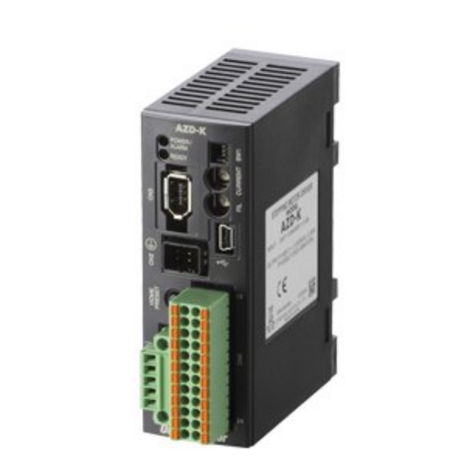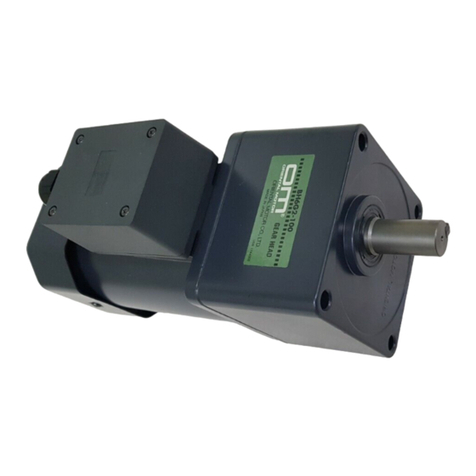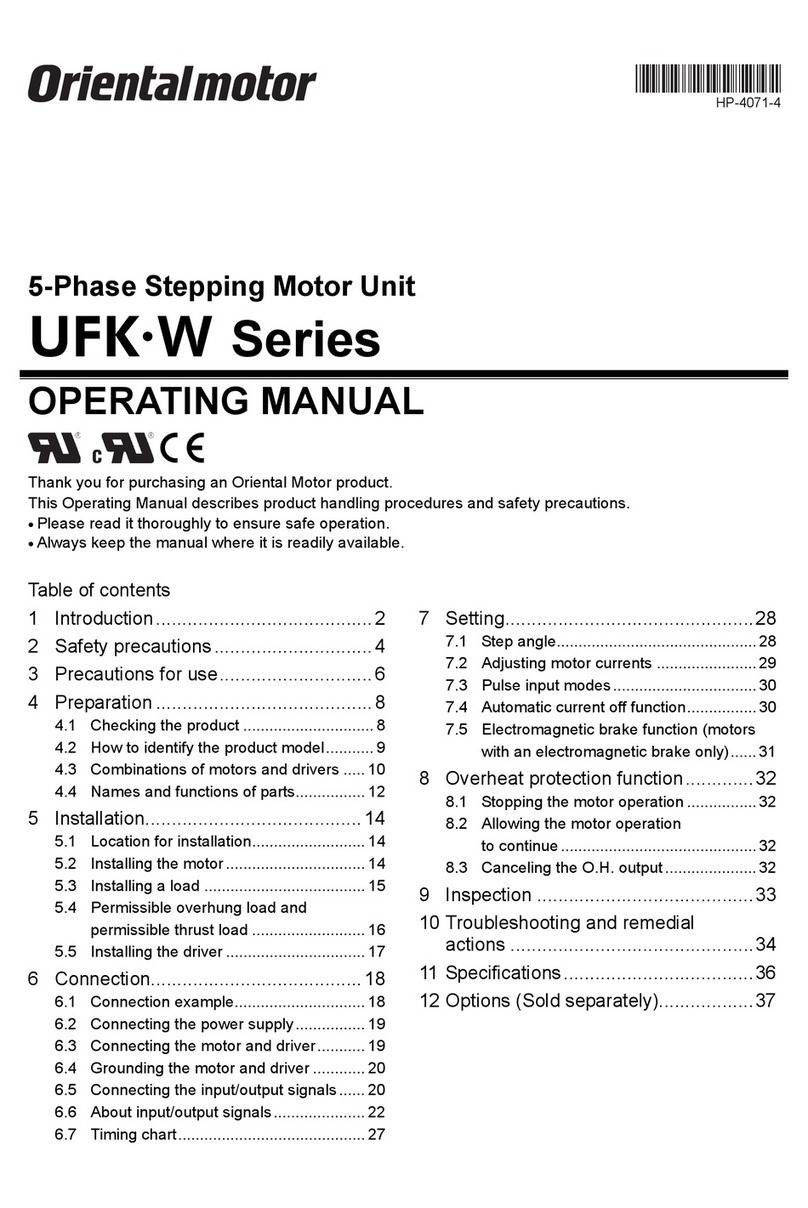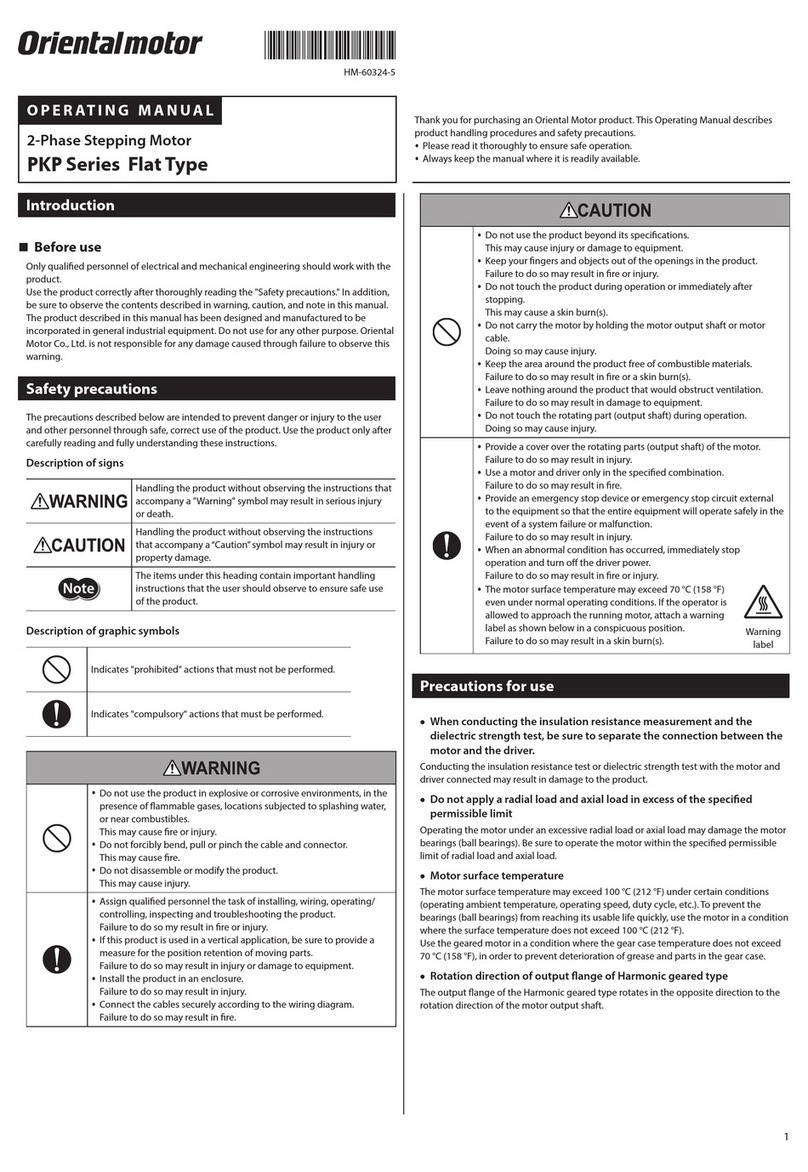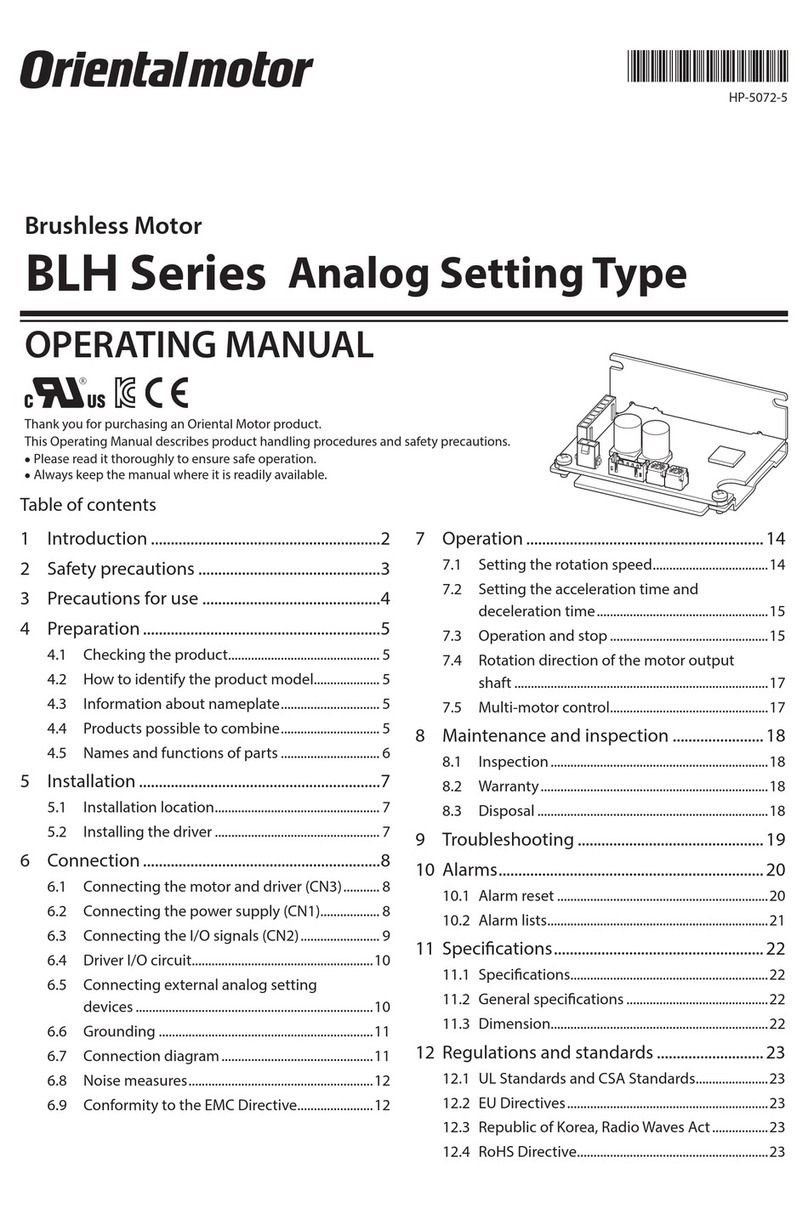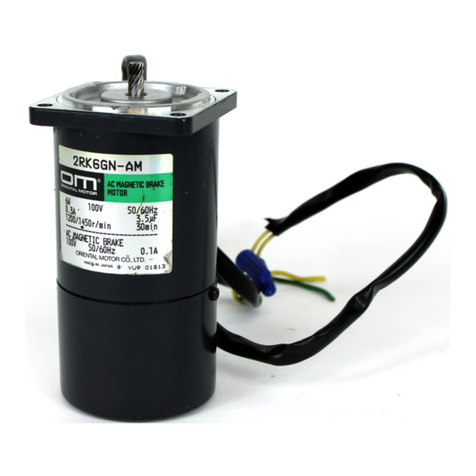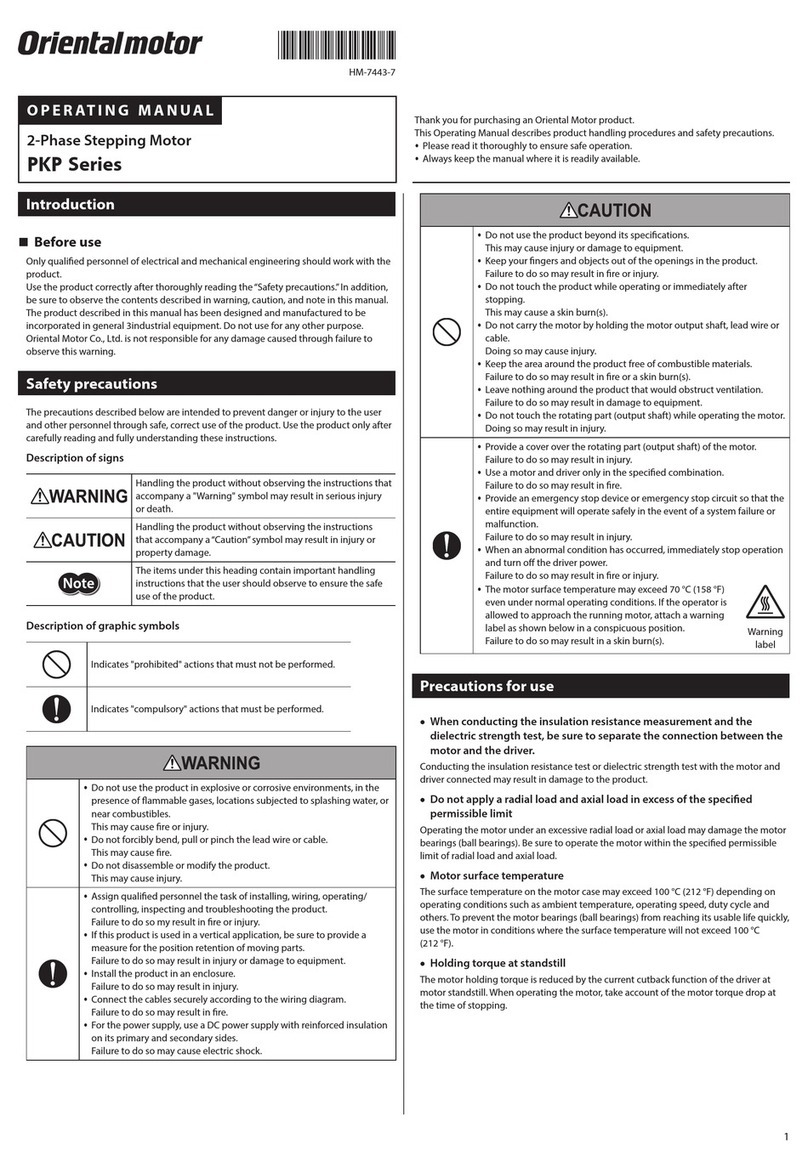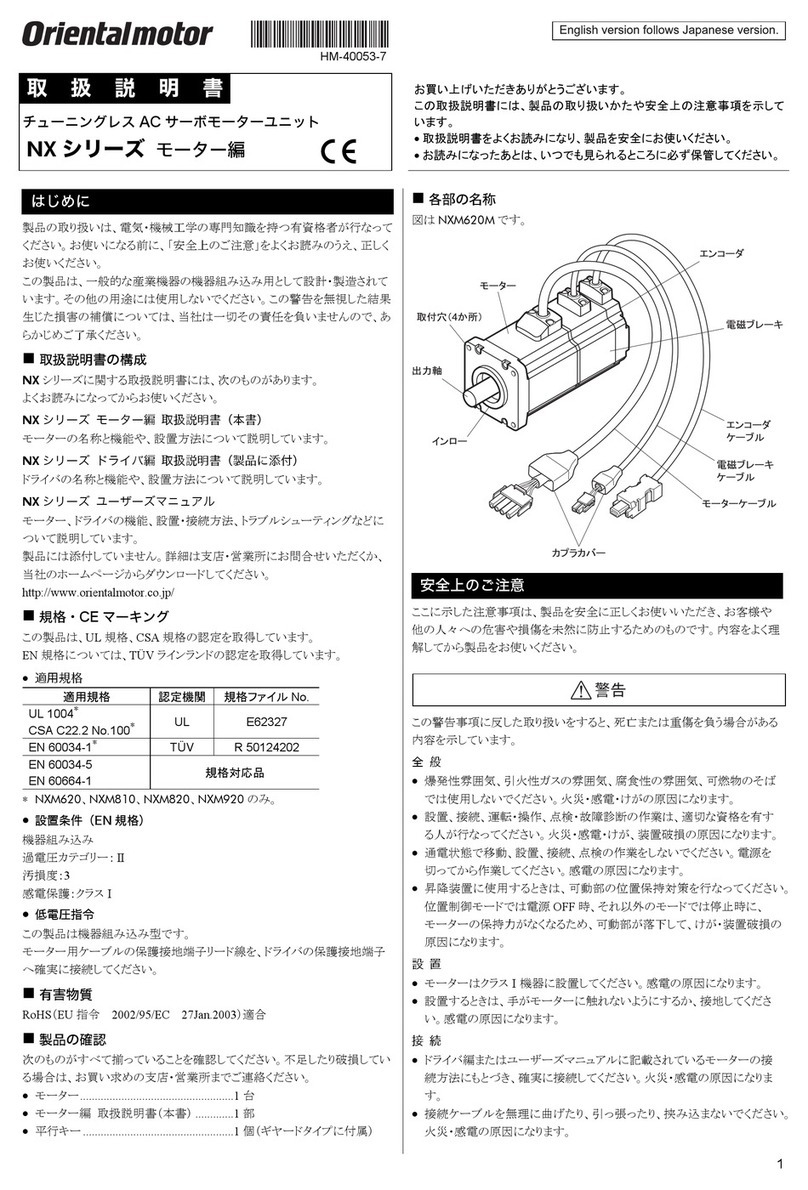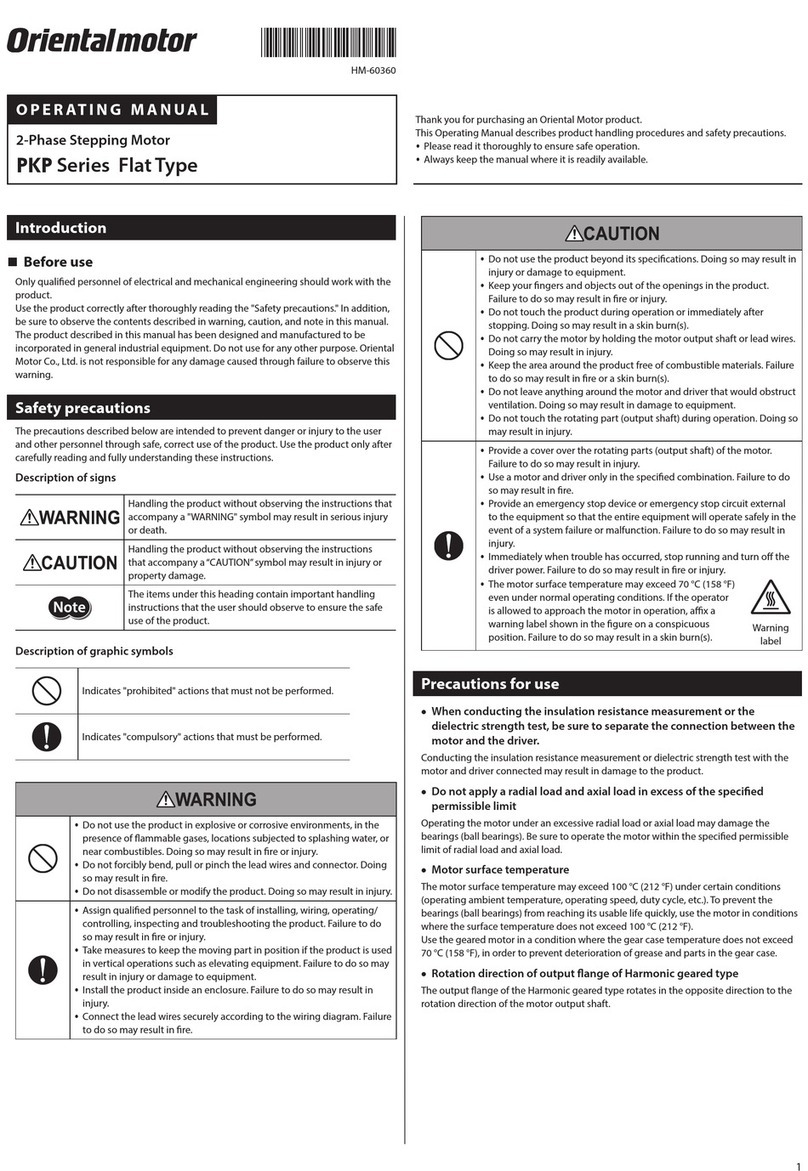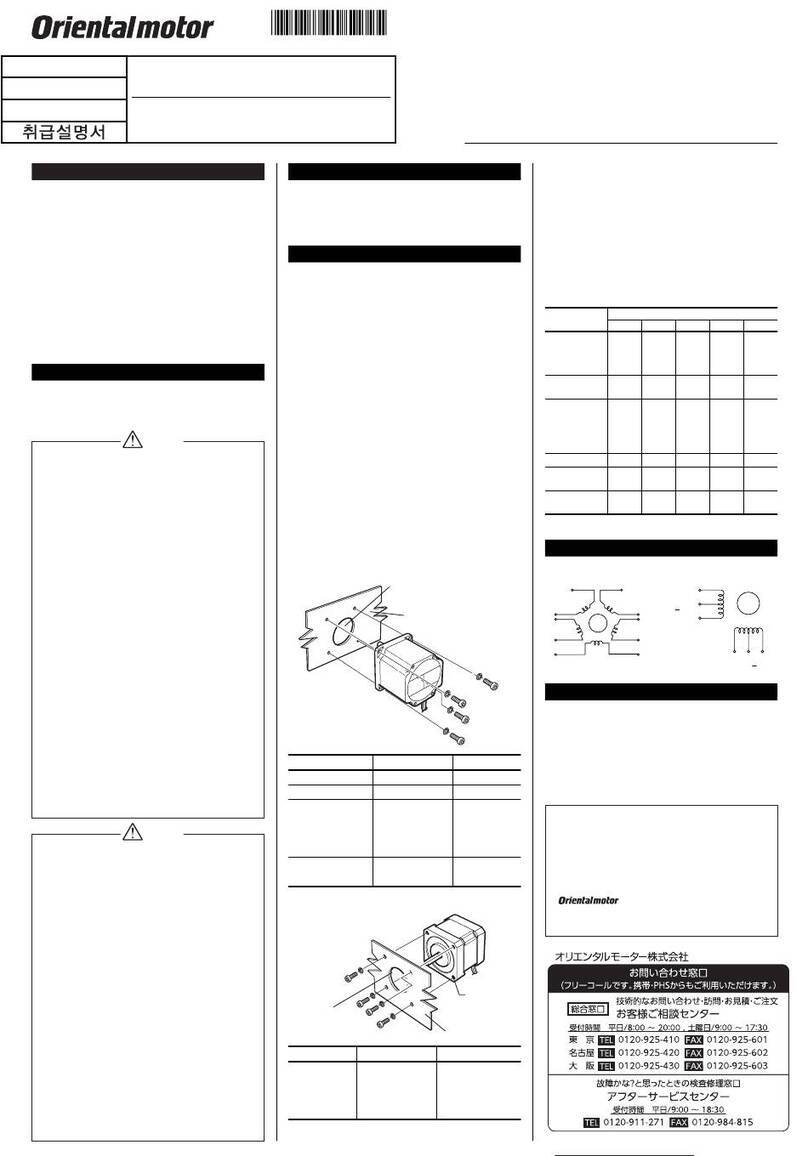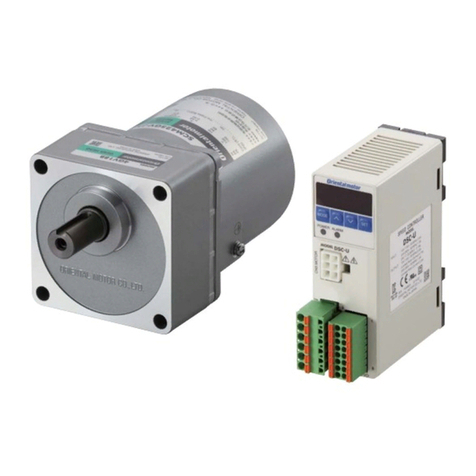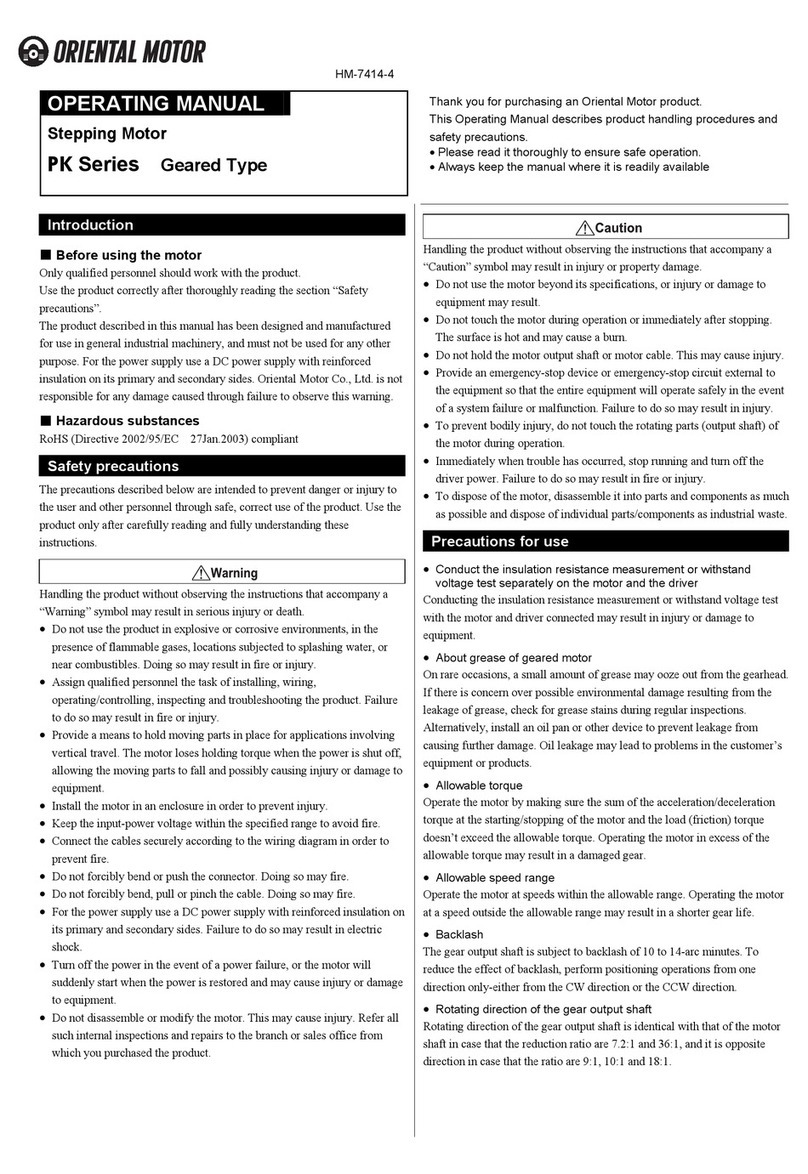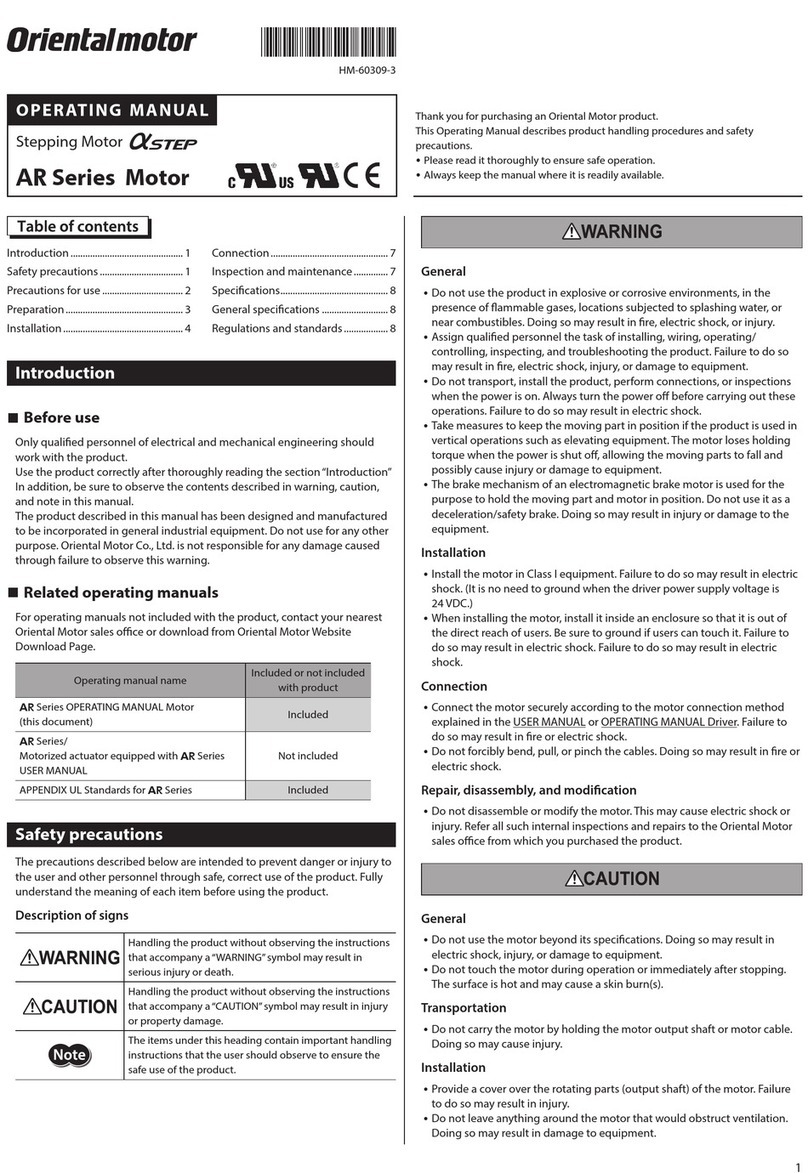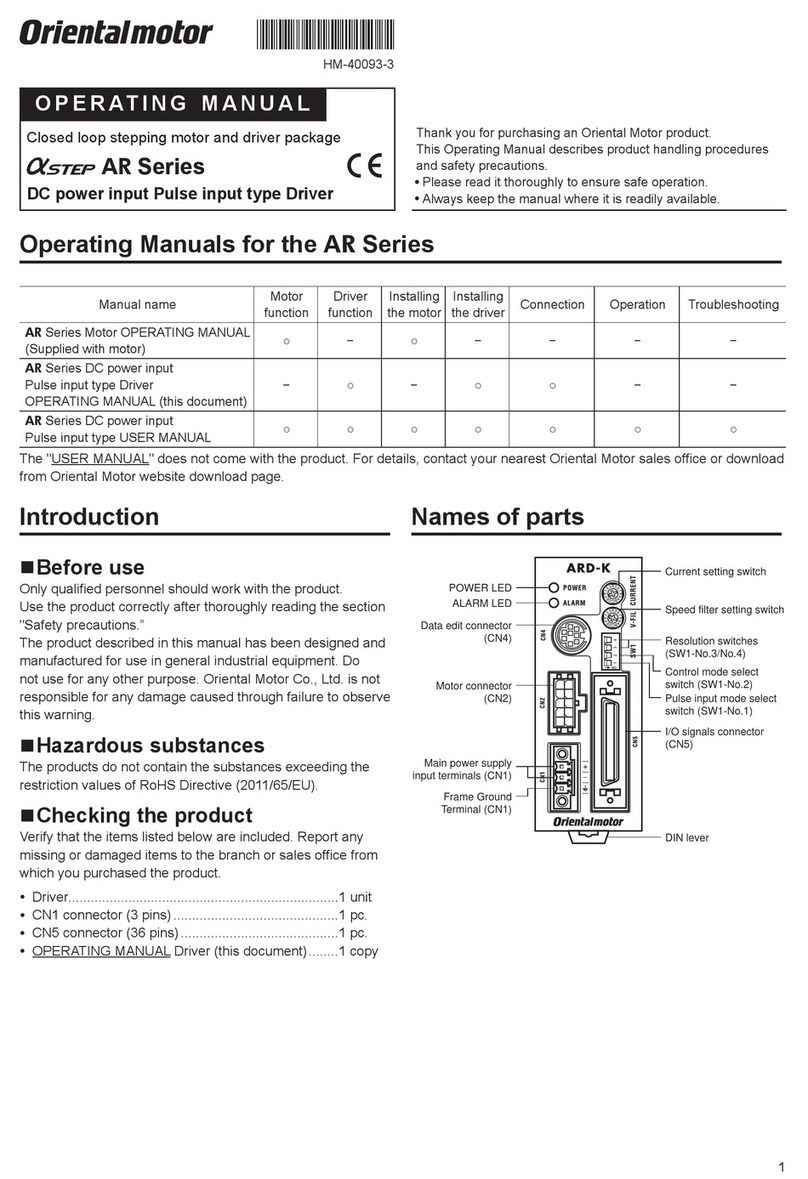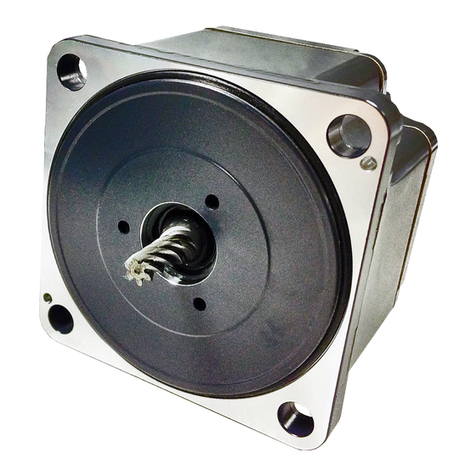
4
yUnauthorized reproduction or copying of all or part of this manual is prohibited.
yOriental Motor shall not be liable whatsoever for any problems relating to industrial
property rights arising from use of any information, circuit, equipment or device
provided or referenced in this manual.
yCharacteristics, specications and dimensions are subject to change without notice.
yWhile we make every eort to oer accurate information in the manual, we welcome
your input. Should you nd unclear descriptions, errors or omissions, please contact the
nearest oce.
yis a registered trademark or trademark of Oriental Motor Co., Ltd., in
Japan and other countries.
© Copyright ORIENTAL MOTOR CO., LTD. 2012
Published in July 2018
echnical Support Tel:(800)468-3982
A.M. to 5:00 P.M., P.S.T. (M-F)
A.M. to 5:00 P.M., C.S.T. (M-F)
.orientalmotor.com
Schiessstraße 44, 40549 Düsseldor
f, Germany
echnical Support Tel:00 800/22 55 66 22
.orientalmotor.de
el:01256-347090
.oriental-motor.co.uk
el:01 47 86 97 50
.orientalmotor.fr
el:02-93906346
.orientalmotor.it
el:+55-11-3266-6018
.orientalmotor.com.br
• Please contact your nearest Oriental Motor oce for further information.
4-8-1Higashiueno
,Taito-ku,Tokyo 110-8536
el:03-6744-0361
.orientalmotor.co.jp
Tel:0800-060708
www.orientalmotor.com.tw
Singapore
Tel:1800-8420280
www.orientalmotor.com.sg
Tel:1800-806161
www.orientalmotor.com.my
Korea
Tel:080-777-2042
www.inaom.co.kr
Tel:1800-888-881
www.orientalmotor.co.th
Tel:400-820-6516
www.orientalmotor.com.cn
Tel:+91-80-41125586
www.orientalmotor.co.in
Hong Kong Branch
Operation
yTurn o the power in the event of a power failure. Or the motor may suddenly start
when the power is restored and may cause injury or damage to equipment.
yDo not turn the motor excitation OFF while operating. The motor will stop its
operation and lose the holding torque. This may cause injury or damage to equipment.
yCongure an interlock circuit in sequence program so that the system including the
motor operates on the safe side when a RS-485 communication error generates.
Repair, disassembly and modication
yDo not disassemble or modify the motor. Refer all such internal inspections and repairs
to the branch or sales oce from which you purchased the product.
General
yDo not use the motor beyond its specications. Doing so may result in injury or
damage to equipment.
yKeep your ngers and objects out of the openings in the motor. Failure to do so may
result in re or injury.
yDo not touch the motor during operation or immediately after stopping. The surface is
hot and may cause a skin burn(s).
Transportation
yDo not carry the motor by holding the motor output shaft or leadwire/connector
assembly. Doing so may cause injury.
Installation
yInstall the motor in the enclosure in order to prevent injury.
yKeep the area around the motor free of combustible materials in order to prevent re
or a skin burn(s).
yProvide a cover over the rotating parts (output shaft) of the motor. Failure to do so
may result in injury.
Connection
yThe connectors CN1, CN2, CN3 and CN4 of the motor are not electrically insulated.
When grounding the positive terminal of the power supply, do not connect any
equipment (PC, etc.) whose negative terminal is grounded. Doing so may cause the
motor and these equipment to short, damaging both.
yWhen connecting, check the indication of the motor and be sure to observe the
polarity of the power supply. Reverse-polarity connection may cause damage to
the motor. The power-supply circuit and the RS-485 communication circuit are
not electrically insulated. Therefore, when controlling multiple motors via RS-485
communication, the reverse polarity of the power supply will cause a short circuit and
may result in damage to the motors.
Operation
yProvide an emergency stop device or emergency stop circuit external to the
equipment so that the entire equipment will operate safely in the event of a system
failure or malfunction. Failure to do so may result in injury.
yBefore supplying power to the motor, turn all input signals to the motor OFF.
Otherwise, the motor may start suddenly at power on and cause injury or damage to
equipment.
ySet a suitable operation speed and acceleration/deceleration rate. Improper setting
may cause loss of the motor synchronism and moving the load to an unexpected
direction, which may result in injury or damage to equipment.
yDo not touch the rotating part (output shaft) during operation. Doing so may cause
injury.
yWhen rotating the output shaft manually while the motor stops, cut o the motor
current by turning o the power supply or motor excitation. Failure to do so may
cause injury.
yThe motor surface temperature may exceed 70 °C (158 °F) even under
normal operating conditions. If the operator is allowed to approach
the running motor, attach a warning label as shown below in a
conspicuous position. Failure to do so may result in skin burn(s). Warning label
yImmediately when trouble has occurred, stop running and turn o the motor power.
Failure to do so may result in re or injury.
yStatic electricity may cause the motor to malfunction or suer damage. While the
motor is receiving power, do not touch the motor. Always use an insulated slotted
screwdriver to adjust the motor’s switches.
Disposal
yDispose the product correctly in accordance with laws and regulations, or instructions
of local governments.

